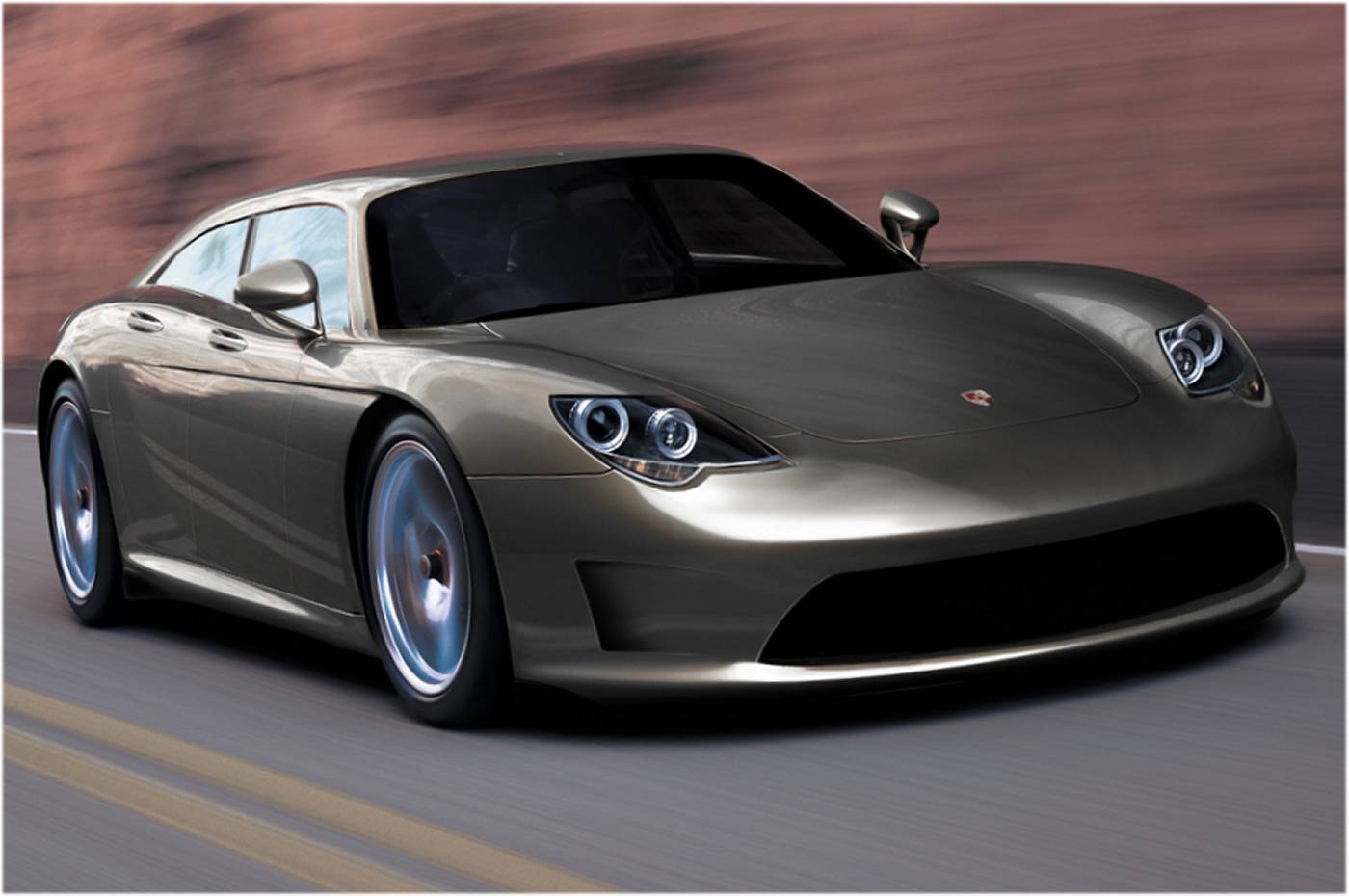The Cayenne quickly became one of Porsche's most popular models.
But though it's a potent performer on and off-road, the 4WD Cayenne was never intended to be an all-out sports car like its 911, Cayman and Boxster siblings.
Something was still missing from the Porsche lineup.
With the introduction of the 2010 Panamera sport sedan, Porsche fills in that gap with a machine that offers the no-compromises driving experience of a high-performance coupe in a body that just happens to have four doors.
The car sits low - the top of its roof is only about four-and-a-half feet off the ground (55.8 inches). That's nearly a foot lower than the roofline of the current Cayenne - and within inches of the race car profile of the current 911 (51.6 inches). The Panamera also sits about two inches closer to the pavement than a 2010 BMW 5-series (57.8 inches) or Mercedes S-Class (58 inches) and though it has four doors, it is designed to seat only four people - not five. In the back, you'll find a pair of sculpted sport buckets - not a three-across bench as in virtually every other luxury sedan. But luxury is not by any means overlooked. Those contoured back buckets are eight-way adjustable and available with bun warmers and coolers as well as a refrigerated compartment tucked nearby for perishables.
To complete the uber-luxury ensemble, select the 16 speaker Burmester surround-sound audio system and "ruffled" ultra-premium leather upholstery.
Under the Panamera's 911-like hood, meanwhile, lies a 4.8 liter all-alloy V-8 that produces between 400 and 500 horsepower (in Turbo form). It is the first V-8 to be put into a Porsche sports car since the old 928 series - which was discontinued after the 1995 model year. The Panamera shares another feature with the historic 928: its engine is up in front rather than tucked behind the driver, as in the mid-engineed Cayman/Boxster and the rear-engined 911.
The front-engined layout was deemed necessary mainly for balancing reasons (the Panamera would otherwise be overly light-nosed and this would impair handling) while calling up the big V-8 vs. the more traditional - and smaller displacement - "boxer" sixes was necessary to provide the 4,300 pound sedan with the bottom end grunt (as well as high RPM horsepower) necessary for 911-like acceleration. How 911-like?
The standard car (without turbocharging) can blast to 60 mph in 4.9 seconds while the more powerful Turbo Panamera will get you to the same speed in exactly 4 seconds flat. You can keep track of the stats via programmable in-car "chronometer" stopwatches that record your sessions - on street or track. The fierceness of the engine and the firmness of the Porsche Dynamic Chassis Control suspension system are also fully driver-adjustable - ready for "The Ring" or a gentle commute home from the office - at the touch of a switch.
The Panamera's power flows to the rear wheels (or all four, if you choose the optional AWD-equipped 4S model) via a seven-speed Porsche Doppelkupplungsgetriebe (PDK) automatic transmission. Some may grumble about the lack of a third pedal and a clutch, but Porsche says the PDK automatic can outshift anyone whose last name isn't Schumacher - and is more precise and consistent besides.
The Panamera even has a green streak. Its engine will automatically turn itself off when the car comes to a stop at a traffic light or when you're stuck idling in traffic - and restart itself automatically when it's time to get moving again. Exactly like a current Prius or Insight hybrid - but a lot more fun when the light goes green. The Panamera goes on sale this spring.


 11:38 PM
11:38 PM
 admin
admin

0 comments:
Post a Comment